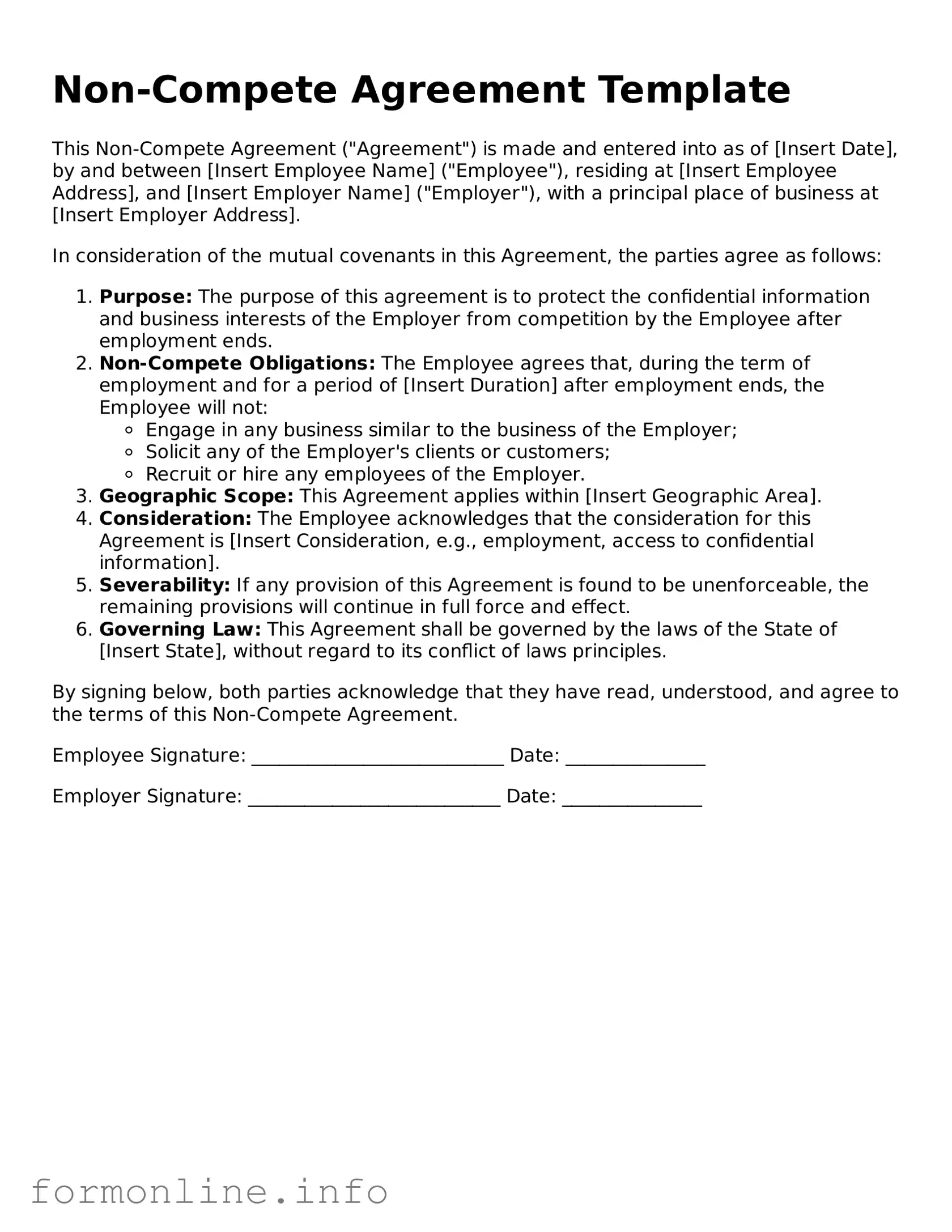Non-Compete Agreement Template
This Non-Compete Agreement ("Agreement") is made and entered into as of [Insert Date], by and between [Insert Employee Name] ("Employee"), residing at [Insert Employee Address], and [Insert Employer Name] ("Employer"), with a principal place of business at [Insert Employer Address].
In consideration of the mutual covenants in this Agreement, the parties agree as follows:
- Purpose: The purpose of this agreement is to protect the confidential information and business interests of the Employer from competition by the Employee after employment ends.
- Non-Compete Obligations: The Employee agrees that, during the term of employment and for a period of [Insert Duration] after employment ends, the Employee will not:
- Engage in any business similar to the business of the Employer;
- Solicit any of the Employer's clients or customers;
- Recruit or hire any employees of the Employer.
- Geographic Scope: This Agreement applies within [Insert Geographic Area].
- Consideration: The Employee acknowledges that the consideration for this Agreement is [Insert Consideration, e.g., employment, access to confidential information].
- Severability: If any provision of this Agreement is found to be unenforceable, the remaining provisions will continue in full force and effect.
- Governing Law: This Agreement shall be governed by the laws of the State of [Insert State], without regard to its conflict of laws principles.
By signing below, both parties acknowledge that they have read, understood, and agree to the terms of this Non-Compete Agreement.
Employee Signature: ___________________________ Date: _______________
Employer Signature: ___________________________ Date: _______________
